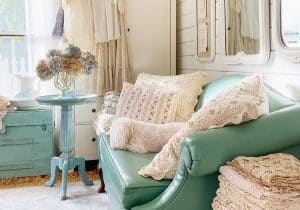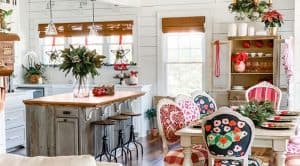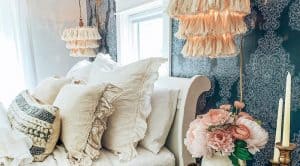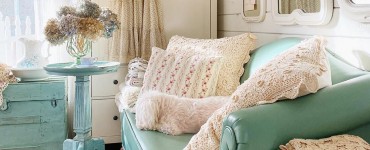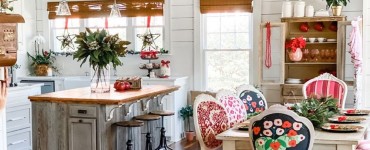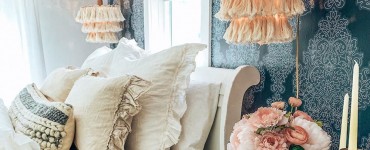If you’re in the midst of redecorating or planning to give your home a fresh, charming look, you’ve come to the right place. Interior design styles can be both exciting and overwhelming, with a plethora of options to choose from. Among the popular choices are the timeless Shabby Chic and Rustic styles, each exuding its own unique appeal and personality.
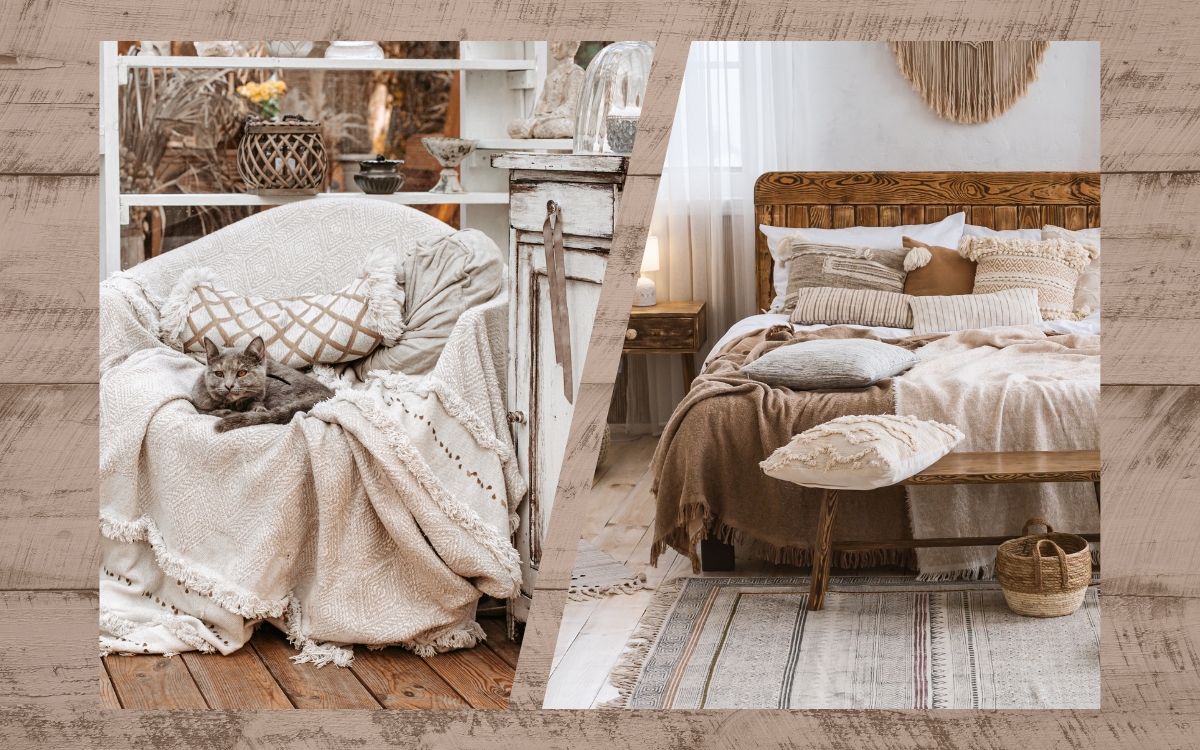
In this informative guide, we will delve into the world of Shabby Chic and Rustic decor, exploring their origins, key characteristics, and the pros and cons of each style. Whether you lean towards the elegant, feminine allure of Shabby Chic or prefer the cozy, rustic charm of a country cottage, we’ll help you understand the essence of both styles, enabling you to make an informed decision for your home.
Understanding Shabby Chic
Shabby Chic is a timeless and endearing interior design style that has captivated countless hearts with its elegant, vintage-inspired charm. It originated in the 1980s, thanks to British interior designer Rachel Ashwell, who embraced the beauty of worn, aged, and distressed furniture and decor. This style embodies a sense of nostalgia, taking inspiration from the past and infusing spaces with a romantic, whimsical ambiance.
The Origins and History of Shabby Chic
Shabby Chic’s roots can be traced back to the English countryside, where Ashwell was inspired by the rustic beauty of country cottages and flea market finds. She sought to create a design approach that embraced imperfections and celebrated the allure of aged pieces with a feminine touch. By combining vintage elements, soft pastel colors, and floral patterns, she crafted a design philosophy that would resonate with those who cherished a cozy and lived-in aesthetic.
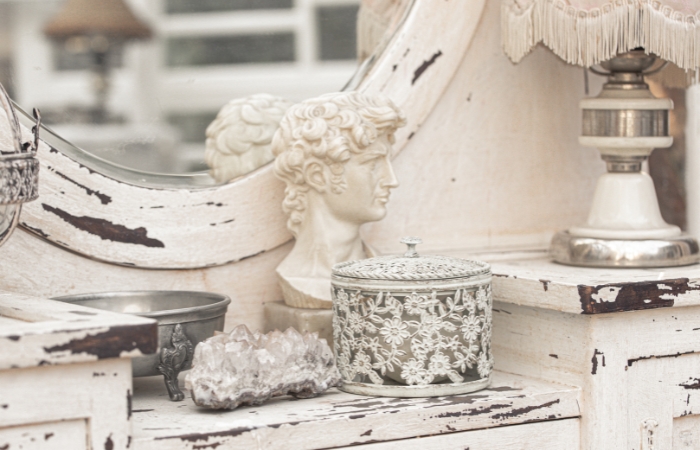
Key Characteristics and Elements of Shabby Chic
Decor Shabby Chic decor is characterized by a delicate balance of rustic and refined elements. Distressed and weathered furniture take center stage, showcasing the passage of time and the beauty of imperfections. Delicate, vintage-inspired accessories, such as ornate picture frames, antique mirrors, and lace curtains, add a touch of nostalgia and grace to the overall look.
The color palette of Shabby Chic revolves around soft pastel hues, including pale pinks, blues, greens, and creamy whites, which contribute to the style’s calming and soothing ambiance. Floral patterns and fabrics play a significant role in creating a romantic atmosphere, evoking the feel of a blooming English garden.
Shabby Chic enthusiasts often incorporate repurposed materials and DIY projects into their decor, adding a personal and heartfelt touch to their living spaces. Whether it’s upcycling an old dresser, creating a charming display with vintage teacups, or crafting handmade floral arrangements, Shabby Chic allows for creativity and individual expression.
Emphasis on Femininity and Romanticism
At the core of Shabby Chic lies an emphasis on femininity and romanticism. Soft, delicate touches, such as ruffled cushions, floral wallpapers, and fringed lampshades, create an atmosphere that feels dreamy and inviting. This style is particularly popular among those who appreciate a cozy, feminine retreat that embraces a touch of vintage glamour.
Shabby Chic as a Timeless and Versatile Style
One of the enduring qualities of Shabby Chic is its versatility. While it is often associated with a vintage and feminine aesthetic, it can be adapted to suit various tastes and preferences. The soft color palette and emphasis on comfort make it an excellent choice for creating a relaxing and welcoming space. Additionally, Shabby Chic seamlessly blends with other design styles, such as French Country or Coastal, allowing for a harmonious and eclectic mix.
Understanding Rustic
Rustic is an enchanting interior design style that draws inspiration from the simplicity and rugged beauty of the natural world. Evoking the charm of a cozy country cottage or a serene mountain retreat, Rustic decor celebrates the use of organic materials and earthy colors to create a warm and inviting ambiance. Let’s delve into the essence of Rustic and explore its key characteristics and elements.
The Roots and Evolution of Rustic Design
The Rustic style finds its origins in rural and countryside settings, where homes were built using natural materials readily available in the environment. The focus was on functionality and durability, resulting in sturdy and unpretentious designs that stood the test of time. Over the years, Rustic design has evolved, blending elements of traditional craftsmanship with modern sensibilities to create a versatile and timeless aesthetic that appeals to a wide range of individuals.
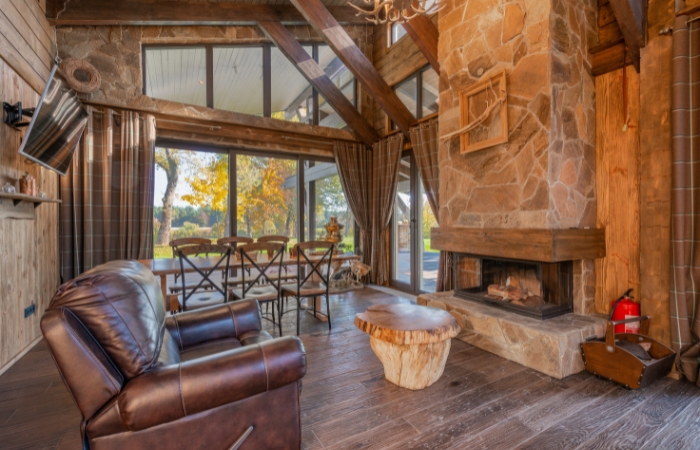
Key Characteristics and Elements of Rustic Decor
Use of Natural Materials like Wood and Stone
At the heart of Rustic design lies the extensive use of natural materials, particularly wood and stone. Wooden beams, exposed brick walls, and reclaimed wood furniture are common features that bring the outdoors inside, infusing spaces with a sense of authenticity and warmth. The raw and rugged textures of these materials add depth and character to the overall decor.
Earthy Color Scheme with Warm Tones
The color palette of Rustic decor revolves around earthy and warm tones, mimicking the hues found in nature. Rich browns, deep greens, warm reds, and muted yellows are commonly used to create a welcoming and soothing environment. These colors contribute to the sense of comfort and tranquility that Rustic spaces often evoke.
Cozy and Rugged Textures
Textures play a vital role in Rustic decor, adding layers of visual and tactile interest. From rough-hewn wooden surfaces to plush, natural-fiber textiles, such as wool and linen, Rustic spaces exude a sense of coziness and comfort. The interplay of textures creates a space that feels inviting and lived-in, inviting you to relax and unwind.
Emphasis on Simplicity and Functionality
Rustic design celebrates simplicity and functionality. It avoids unnecessary embellishments and embraces straightforward, practical furnishings and decor. Each piece serves a purpose and contributes to the overall harmony of the space. This unpretentious approach to design creates an environment that is easy-going and uncluttered.
Incorporating Elements of the Outdoors
Rustic decor often incorporates elements of the outdoors to further enhance its connection to nature. This may include botanical prints, nature-inspired artwork, or decorative items like antlers, branches, and dried flowers. These touches serve as a reminder of the beauty and serenity of the natural world.
Rustic as a Timeless and Versatile Style
One of the enduring qualities of Rustic design is its timeless appeal. Whether in a countryside cabin or an urban apartment, Rustic decor seamlessly adapts to various settings and lifestyles. It evokes a sense of nostalgia and comfort, making it an excellent choice for those seeking a home that feels grounded and welcoming.
Shabby Chic vs. Rustic: A Comparison
Shabby Chic and Rustic are two captivating interior design styles that share some common elements yet evoke distinct aesthetics and ambiance. While both embrace a sense of comfort and nostalgia, they each have their unique characteristics that set them apart. Let’s delve into the comparison between Shabby Chic and Rustic to better understand the differences and similarities between these charming design approaches.
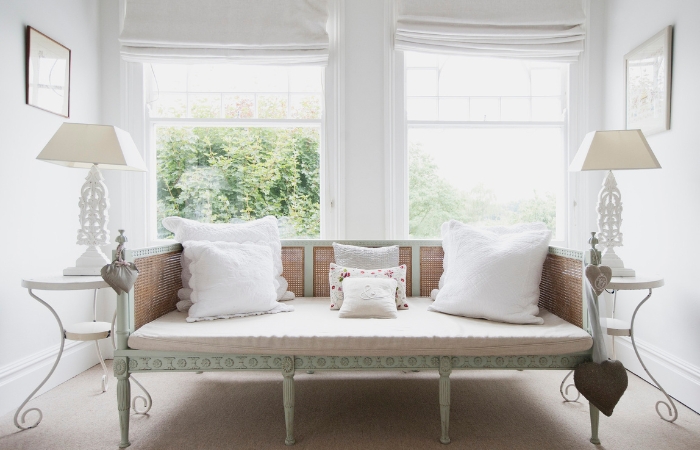
Similarities between Shabby Chic and Rustic
Focus on Creating a Cozy and Comfortable Environment
Both Shabby Chic and Rustic design styles prioritize creating a cozy and inviting atmosphere in the home. The use of natural materials, soft color palettes, and comfortable textures contribute to spaces that exude warmth and tranquility. Whether it’s a rustic country cottage or a shabby-chic inspired bedroom, both styles aim to make you feel at ease in your surroundings.
Incorporation of Vintage or Vintage-Inspired Elements
Another common thread between Shabby Chic and Rustic is their appreciation for vintage or vintage-inspired elements. Shabby Chic decor often includes distressed and weathered furniture, vintage accessories, and floral patterns, evoking a sense of nostalgia and timeless charm. Similarly, Rustic design celebrates the use of reclaimed wood, rustic decor pieces, and antique accents, infusing spaces with a rustic and historical allure.
Emphasis on Handmade and DIY Projects
Both Shabby Chic and Rustic styles encourage creativity and personal expression through DIY projects and handcrafted decor. Whether it’s distressing furniture, sewing cushions from vintage fabrics, or crafting rustic wooden decor pieces, these design styles allow for a hands-on approach, adding a personal touch to your living spaces.
Differences between Shabby Chic and Rustic
Color Palettes and Overall Aesthetics
Perhaps one of the most noticeable differences between Shabby Chic and Rustic lies in their color palettes and overall aesthetics. Shabby Chic embraces soft pastel hues, such as pale pinks, baby blues, and creamy whites, creating an elegant and feminine ambiance. In contrast, Rustic design features earthy and warm tones, including rich browns, deep greens, and warm reds, evoking a more rugged and natural vibe.
Use of Distressed versus Raw, Natural Materials
While both styles celebrate the use of natural materials, their treatment of these elements differs. Shabby Chic often incorporates distressed and weathered finishes on furniture and decor to achieve an aged and vintage look. On the other hand, Rustic design typically showcases raw and untreated materials, allowing the natural beauty of wood, stone, and other elements to shine through.
Degree of Formality and Femininity in Shabby Chic vs. Masculinity and Simplicity in Rustic
Shabby Chic leans towards a more formal and feminine aesthetic, with its emphasis on elegance and vintage charm. The use of delicate fabrics, floral patterns, and ornate accessories contributes to a refined and romantic ambiance. In contrast, Rustic design exudes a more masculine and down-to-earth feel, focusing on simplicity, functionality, and rugged textures inspired by the outdoors.
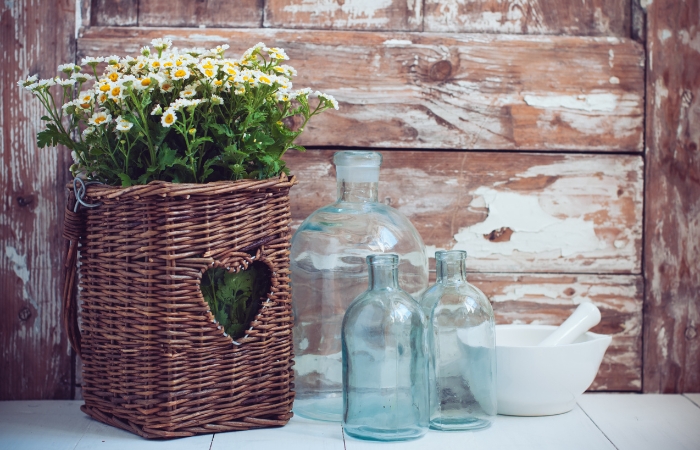
Which Style is Right for You?
Choosing between Shabby Chic and Rustic design styles depends on various factors, including your personal preferences, lifestyle, and the ambiance you wish to create in your home. Let’s explore some considerations to help you determine which style aligns best with your tastes and needs.
Identifying Your Personal Preferences and Aesthetics
Consider your personal preferences and the aesthetics that resonate with you the most. If you find yourself drawn to a soft and elegant ambiance with vintage charm, Shabby Chic might be the perfect fit for you. The pastel color palette, floral patterns, and distressed furniture evoke a sense of romance and timeless allure, creating a space that feels warm and inviting.
On the other hand, if you admire the rustic beauty of the outdoors and prefer a more down-to-earth and unpretentious ambiance, Rustic design might be the ideal choice. The earthy color tones, use of natural materials, and raw textures create a cozy and rugged atmosphere, making you feel connected to nature and the countryside.
Considering Your Existing Home’s Architecture and Layout
Another important consideration is your existing home’s architecture and layout. Some design styles complement certain architectural elements better than others. For example, if your home features exposed wooden beams or brick walls, Rustic decor can enhance the rustic charm already present in the space. Conversely, if your home has a more classic and traditional layout, Shabby Chic can complement its elegance and vintage appeal.
Evaluating the Role of Functionality and Practicality
Functionality and practicality are vital aspects to consider when choosing an interior design style. Shabby Chic, with its delicate and ornate elements, may require more maintenance and care to keep the vintage look intact. If you have a busy household with kids or pets, Rustic design might offer a more practical and durable option, as it embraces the natural wear and tear of everyday life.
Drawing Inspiration from Real-Life Examples and Interior Design Ideas
Look for real-life examples and interior design ideas to gain inspiration and visualize how each style can be implemented in your home. Browse through magazines, websites, and social media platforms to see how designers have successfully incorporated Shabby Chic or Rustic elements into various spaces. Pay attention to details such as color schemes, furniture choices, and decorative accents to determine which style resonates most with your taste and vision.
Embracing a Fusion of Both Styles
If you find yourself torn between Shabby Chic and Rustic, remember that blending elements from both styles is also a valid option. Interior design is a creative journey, and there are no strict rules when it comes to crafting your ideal living space. Consider integrating vintage-inspired pieces and distressed finishes from Shabby Chic with natural materials and earthy tones from Rustic design to create a harmonious fusion that reflects your unique personality and preferences.
Conclusion
We hope this comparison of “Shabby Chic vs. Rustic” has been illuminating and insightful in your quest to transform your living spaces. Both styles have their undeniable charm and unique attributes that can breathe new life into your home, reflecting your personality and taste.
If you love the romance of bygone eras and appreciate a soft, vintage allure, Shabby Chic might be the ideal match for you. Embrace its distressed furniture, pastel hues, and floral patterns to create a warm and welcoming atmosphere that never goes out of style.
On the other hand, if you yearn for the tranquility of nature and a simple, unpretentious vibe, Rustic decor can fulfill your desires. Incorporate natural materials, earthy colors, and rustic textures to infuse your home with a cozy and rustic charm that resonates with your love for the outdoors.



